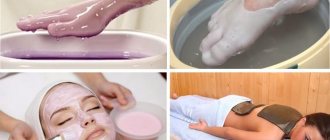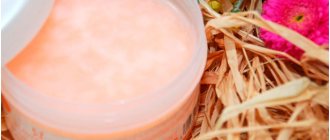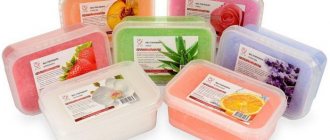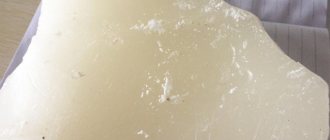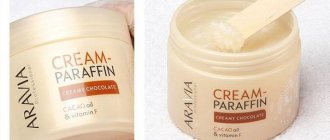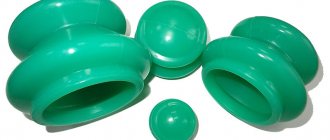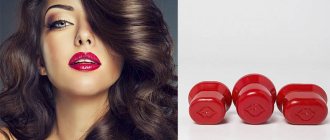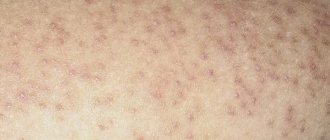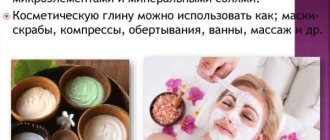Difference between wax and paraffin
We all know that there is both wax and paraffin. Paraffin is a substance that is a wax-like mixture formed due to saturated hydrocarbons. It is a petroleum derivative. It is generally inert to many chemicals.
The state of paraffin is directly dependent on the ratio of the concentration of hydrocarbons in it - both light and heavy. Depending on the structure, fractional composition and melting point, it can be solid (t pl = 28-70 °C), liquid (t pl ≤ 27 °C), and finely crystalline - ceresin (t pl > 60-80 °C). The chemical composition of all paraffins must be standardized indirectly by melting point and microhardness.
Wax is a mixture of simple lipids. It is very common in nature. Its melting point is in the range of 60-70 degrees. Ozokerite, known to many, is a wax fossil, which mainly consists of saturated hydrocarbons.
Does it burn or crumble?
Paraffin is capable of burning completely; during the burning of paraffin, soot is released. And wax is usually yellow-brown in color, while paraffin is white (provided that no dyes are added to it). The density of paraffin is such that if you cut it, it will crumble. There is no wax. It will be divided into whole pieces. Paraffin in its pure form almost does not lead to allergic reactions. Wax can cause redness and rashes on the skin.
Even if the paraffin is heated to a fairly high temperature, it does not cause discomfort. This happens due to the fact that it is able to give off heat very slowly, the skin does not burn, but warms up little by little. Wax also does not cause burns, and is also capable of warming up the body well at the site of its application.
History of the lamp
The first lamps were not perfect. They smoked terribly, and the light from them was weak and often went out.
Later, the clay bowl turned into a closed teapot, into the spout of which a wick was threaded. This is how the oil lamp appeared, which became the best source of lighting for several hundred years. Its flame was brighter, but when burning the lamp smoked. The invention of lamp glass helped overcome soot.
Difficulties in working with paraffin
You can buy paraffin at any pharmacy. True, it happens extremely rarely, and it is somewhat more difficult to work with it, because it is less plastic.
The use of paraffin in cosmetics is as follows. In addition to paraffin, cosmetic companies can offer parafango - a mixture of paraffin and therapeutic mud in equal proportions.
To melt paraffin, you can purchase a special heating device. It must be equipped with a thermostat. A warming bath is also suitable.
Use in cosmetics
Paraffin has the ability to rejuvenate the skin and smooth out wrinkles. For cosmetic procedures, it is warmed up a little and the first layer is applied to the face. Subsequent layers - and there should be a total of four or five of them - must be applied with paraffin at a higher temperature - maybe even 48 degrees.
The duration of this procedure is only 10-15 minutes. At the end of this time, the frozen paraffin can be carefully removed from the face. Once the mask is removed, there is no need to wash your face. But taking care of your face with a night moisturizer or serum will be just right.
Here you need to pay attention to the fact that the paraffin cools quickly, so the mask gradually peels off. It can be used many times. The fact that paraffin must be melted before each procedure will not deteriorate its chemical structure. True, there is an opinion that it can accumulate unnecessary toxins that it absorbs from the skin, so it can only be used once. But here everyone decides for himself.
What to make a wick from
The most common type of wick used for candles is cotton. The easiest way to buy it is in a specialized store. If you do it yourself, you can twist it from cotton sewing threads, floss, or use cotton knitting thread of sufficient thickness. One thread is not enough for a candle wick. You can weave a braid from the threads, crochet it, or simply twist it into a rope. In principle, each type of wax requires its own type of wick and its diameter. Even for each composition, so they select the parameters empirically.
The thickness of the wick depends on the diameter of the candle
In any case, before pouring the candle, the cotton wick must be prepared:
- Melt some paraffin.
- Dip a piece of wick into it and leave for 5 minutes.
- Place on waxed paper or foil (it is important not to absorb fat) and level.
- Leave in the room for at least 6 hours or put in the refrigerator for an hour.
After such preparation, the wick will burn evenly. If you use it without preparation, there is a high probability that the flame will be “choked” as it will burn through too quickly.
In addition to thread wicks, there are wooden ones
There are also wooden wicks. They are made from wood veneer. They need to be dipped in oil, left there for a few minutes, placed on plastic or foil and kept for 6-8 hours. Wipe with a cloth before installation.
How to select the type and thickness of the wick
For long burning, the diameter of the wick is important. There is one important rule that beginners need to remember: the thicker the candle, the thicker the wick should be. But its specific diameter, and type, also depends on the composition of the base.
Table for selecting the diameter of the wick when casting a candle yourself
So, beeswax candles require a wick made of thicker threads. And the twist should be minimal. There may even be just folded threads, otherwise the fire will choke. For paraffin candles, make/choose wicks from thin, tightly twisted threads.
An incorrectly selected wick may cause the flame to go out.
How to choose a wick? By trial method. To make it easier, refer to the table above - it will help with your initial selection. Then, based on the combustion results, you can understand how to change the wick parameters.
- If the flame goes out due to a large puddle of wax/paraffin, the wick is too thin, try a slightly thicker one.
- If the flame smokes, the wick curls, and the candle leaks, you have used a wick that is too thick. Need something thinner.
Gradually, with experience, it will be easier to choose the right thickness and type of twist the first time.
How to install the wick
The uniformity and duration of burning of a candle largely depends on the wick. One of the important points is that it must be exactly centered and must be level. To install the wick in container candles, special holders are used. Wax is dripped into the center of the mold, and a holder with a thread attached is dipped into it. The second end of the thread is fixed exactly in the center on the upper edge of the form. This can be done using clothespins, twisting them around a pencil or holding them in hair clips. In principle, the method is not important. It is important that the wick is exactly in the center.
Using clothespins you can quickly and easily center the wick
In molded candles (which are removed from the mold after casting and cooling), you can attach the wick as described above. Another option is to make a hole in the bottom, pull the thread through and make a knot. Cover the hole with tape or drip some wax and wait until it hardens.
Let's get acquainted with paraffin therapy
Purified paraffin is a completely inert substance. It will not react with any components of cosmetics. It will not be absorbed by the skin and is suitable for any skin type.
The melting point of paraffin is 50°C (in some sources – 52-55°C), and it becomes a viscous white mass. This is the type of paraffin that is recommended to be applied to the skin. The high temperature of the paraffin does not cause any discomfort.
After applying such a mask, only a few minutes will pass, and the skin temperature will have time to increase by one and a half to two degrees. Since the temperature is increased, the upper stratum corneum of the skin will soften, the pores will open, and sweating will be activated. But moisture will not be able to evaporate from the surface of the skin, because paraffin remains completely impenetrable. It remains on the surface of the skin, and after the procedure is absorbed again, thereby restoring the water balance.
At the same time, toxins no longer enter the skin, because the molecule of each toxin is much larger and heavier than water molecules.
Form, dyes, dishes
The shape can be a variety of containers. These could be sand molds or coffee cans. If you want to make the decoration tapered or round, you need to take a container that is used as a mold, for example a plastic ball. It is necessary to make a longitudinal cut and make a hole in the upper part of the mold, with a diameter of at least ten millimeters, so that the composition can be poured into it without any hindrance.
Wax crayons, food coloring or natural substances, such as cocoa, can be used as dyes. Dyes based on water or alcohol are not suitable.
You will also need dishes: a small saucepan or bowl will do. It is important that it fits comfortably in the water bath.
Additional materials are necessary to add beauty to your work. In addition, you can use any scents. The use of additional substances can only be limited by your imagination. These can be beads, shells, sparkles, and scents - cinnamon, vanilla, essential oils.
Benefits of heating and cooling paraffin
So, we already know that the melting point of paraffin is fifty degrees. This figure is suitable for various cosmetic procedures, for example, the one discussed a little higher. Due to the fact that the skin temperature increases, blood flow also becomes faster. At the same time, the skin receives more oxygen and nutrients. When blood circulation increases, lymph flow will accordingly increase, that is, toxins will be eliminated. In addition, when the temperature is elevated, some toxic substances will come to the surface of the skin along with moisture.
When paraffin - this miracle of modern cosmetics - cools, it also has a positive effect on the skin surface. When cooled, the mass of paraffin will decrease in volume and provide a lifting effect.
Regenerating effect
Paraffin therapy is a truly unique restorative procedure that can return tired skin to its well-groomed appearance. Liquid paraffin is used, and the therapy itself has an excellent reputation among cosmetologists and people who turn to them for help.
Medical paraffin can improve the body's metabolic processes, provide a rejuvenating effect, moisturize the skin, and influence its tone. This substance is also beneficial when performing therapeutic procedures for sore joints, bruises, sprains, and some other painful conditions.
The therapeutic effect of medical paraffin is that it improves blood circulation in a diseased organ and normalizes metabolism. Paraffin applications are also used for colds accompanied by cough. In this case, the heat it generates promotes the separation of sputum, which alleviates the patient’s condition.
Types of paraffin
In industry, paraffin comes in several types:
- unrefined, or match;
— highly purified technical (grades A and B);
— purified technical paraffin (grades G and D);
- medical.
As mentioned above, one of the most significant characteristics of paraffin is its melting point, which is not lower than 50 degrees Celsius.
The density of solid paraffin at 15° (depending on its purity) can range from 0.881 - 0.905 g/cm3 (this is unrefined paraffin) to 0.907 - 0.915 g/cm3 (this is purified paraffin).
Notes[edit | edit code]
- ↑ Chemical Encyclopedia / editorial board: Knunyants I.L. and others. – M.: Soviet Encyclopedia, 1992. – T. 3. – P. 446, 207. – 639 p. – ISBN 5-85270-039-8.
- ↑ Lermantov V.V., -. Reichenbach, Karl // Encyclopedic Dictionary of Brockhaus and Efron: in 86 volumes (82 volumes and 4 additional). – St. Petersburg, 1890-1907.
- ↑ G. G. Brodersen. "The Handicraftsman's Handbook." M.-L., Guise, 1931
- ↑ Anisimov I.G., Badyshtova K.M., Bnatov S.A. etc. Fuels, lubricants, technical fluids. Range and application. Handbook / 2nd ed., revised. and additional – Ed. V.M. Shkolnikova. – M.: Tekhinform, 1999. – 596 p. P. 473
- ↑ Kuznetsov, M.I. “Fundamentals of Electrical Engineering” // Publisher: M.: Trudrezervizdat; 6th edition, rev. 423 pages; 1958 p.44-45
Source
How to make paraffin candles
Paraffin wax was created more than a century ago. At that time, this invention saved endangered whale species from extermination. Before this, whale oil was used in lighting lamps. When paraffin appeared, candles began to be made from it, because it was much cheaper.
Only technical paraffin is used for candles. It often comes with aromatic additives and dyes. It is also easy to make such candles at home. You should prepare a wick and a little paraffin. A thread - jute or cotton - is suitable as a wick. You can even use thinly twisted cotton wool. You need to drill a thin hole in a piece of paraffin and pull a wick through it. The second method is to place the wick in the prepared form and add melted paraffin.
Application[edit | edit code]
- as a relatively safe flammable substance to handle: candles for lighting and decorative purposes, a thickener for napalm, thermites and fuels, a component of explosives;
- as a lubricant for rubbing parts: wooden (drawer guides, pencil cases, etc.), plastic (component of ski lubricants, zippers, etc.), metal (bicycle chains, runners, guides, etc.);
- as a sealing, protective, water-repellent substance: the manufacture of paraffin paper, the production of matches, filling the necks of bottles with certain reagents, for example, some volatile ethers, in a mixture with gasoline - an anti-corrosion coating [3] (flammable!), in a mixture with kerosene - a separating agent composition in gypsum casting;
- in cosmetics for the production of Vaseline, thick creams;
- paraffins are registered as food additives E905x;
- used for paraffin therapy in medicine and cosmetology;
- in nuclear physics and technology: an effective neutron moderator and a proton “generator”;
- for greasing felt wads;
- in the food industry for impregnation of packaging materials and for coating food storage containers[4].
In radio engineering:
- For impregnation of electrical paper used in the manufacture of capacitors and winding transformers. In the past, wood or cardboard used to make non-critical insulating parts was also impregnated.[5]
- For filling frameless inductors, to protect them from vibrations and microphone effects. Often used, for example, in VHF radios and pickups for electric guitars. Sometimes the entire volume of the microassembly is filled.
- In other cases where high electrical strength, low AC losses, low price and the ability to be easily released from the filling by simple heating are required.
Lubricate skis with paraffin correctly
In addition to regular ski waxes, paraffin for skis is now widely used. It is divided according to its composition into two types - for sliding and for fastening. True, to treat skis with them, you need a special tool - an iron.
If a skier is sure that in order to improve ski performance (performance) it is necessary to lubricate skis only with paraffin, you need to know how this process works. You need to secure the ski in the machine, and cover the floor nearby with newspapers, film or old unnecessary fabric. Using a special iron, heat the paraffin and carefully drip it onto the sliding surface. Now you need to iron its surface with this iron so that the paraffin is fused into it.
When the master has leveled the paraffin layer, you need to let it cool. You can scrape off the excess later with a scraper. And then you need to brush the surface of the skis with a stiff brush, which has plastic or metal bristles. This must be done so that the microrelief of the plastic is preserved. You shouldn't be too zealous, because the hollows of the pattern can retain paraffin particles. At the very end it’s worth skiing on fibrilene. If you don’t have it at hand, you can use a nylon stocking folded several times.
If the skis are plastic, then it is better to use only factory lubricants. But if they are wooden, then the flight of imagination is unlimited. Beginner skiers usually ask the same, important question for them: is paraffin from a candle or wax suitable for lubricating skis? The answer is very simple: yes, it will do, but such a lubricant will not contain fluorine-containing and temperature additives that will improve the quality of sliding.
You can hear very useful advice from experienced skiers: if there is no opportunity or desire to look for branded ointments, it would be more correct to use medical paraffin rather than candle paraffin. For candles, petroleum match paraffin or stearin is used. The strength of such substances is not enough, and it will be erased from the ski surface in just two hours after the start of skiing. Medical paraffin is more resistant to abrasion due to its properties, so it is more preferable.
What to use for flavoring
To improve the aroma, aromatic substances are added to the candle base. In general, there are special fragrances for candles. It is easier to work with them if you are confident in the quality. Just add the recommended amount.
Set of scents for candles: Lemongrass, Jasmine, Flower bouquet. Recommended fragrance consumption is 6-12% of the total wax mass
For aromatization, special fragrances or aromatic oils with a high ignition temperature are used.
Many people prefer to create their own scents. In this case, you can use aromatic oils. These should be oils, not water or alcohol extracts. Another condition is that they must have a combustion temperature higher than 65°C. These are not all aromatic oils. Suitable oil extracts are geranium, peppermint, lemon mint, anise, amyris, myrrh, lemon myrtle, sandalwood, clove, rosewood, lemongrass, juniper, patchouli, ylang-ylang, lavandin (instead of lavender), patchouli, cinnamon, grape seed, bergamot .
Aroma oils are added to the already melted and colored composition when it has already begun to cool, before pouring. The quantity is counted in drops, the oils are added with vigorous stirring. It is impossible to indicate a specific number of drops. Some compositions have a more intense aroma and 3-5 drops per 100 grams of mass are enough, others are barely perceptible even with 20 drops.
Not all aromatic oils from all manufacturers have sufficient aroma, try finding another company.
Not all oil extracts in candles provide a sufficient level of aroma when burning. If you want a stronger scent, buy fragrances for candles or soap making. They generally smell stronger.
Some solid oils also have a pleasant smell. They can be used both as a base and as a flavoring. For example, coconut, shea, cocoa oils. When using them, standard candle bases account for about 20-30% in recipes.
